Spitfire Mk XVIII, TZ233/T, 208 Squadron RAF, Palestine 1947
This was a long term project, mainly because this MPM kit is a limited run kit, meaning I had to supply some details, scratch others, and generally fix all the errors.
The Subject
The Mk XIV was meant as an interim solution until the “Super Spitfire” design was fully developed as the Mk XVIII. While the XIV was essentially a Mk VIII with the Griffon engine, the XVIII incorporated all the lessons learned in the Griffon development from the prototype Mk IV, the stopgap XII based on the Mk V, and the XIV.
TZ233/T was assigned to 208 Squadron in Palestine in 1947. When Isreal declared independence she immediately went to war with her Arab neighbors, including Egypt. This created a unique situation in which all belligerents, and the Brits trying maintain peace, were flying variants of the Spitfire. During the confusion in the air engagements were inevitable, some British fighters were flying without ammunition making them very vulnerable!
On one such occasion, British Spitfires were flying a reconnaissance mission over Arab bases, Isreali Spitfires engaged and shot down one of the unarmed British, who then responded with armed Spitfires engaging and shooting down an Isreali Spitfire. In the midst of the fighting, Egyptian Spitfires were also shot down along with some destroyed on the ground.
British Spitfires were painted in a different Desert Scheme from Egypt and Isreal, being Dark Earth and Light Slate Grey over Medium Sea Grey. Other aircraft in Palestine wore this same camouflage scheme and all retained the Yellow leading edge and Red spinner identification markings.
The Model
This is an early MPM kit, the sprue gates are thick and the plastic very hard but with lots of flash. The kit has nice decals for standard Day Fighter Scheme subjects and also includes a photo etch fret for some details in the cockpit and wheel wells. A vac canopy is provided, but only the one, so mistakes are not allowed!
I didn’t use the etch fret nor the vac canopy, instead I got my details from the Academy Spitfire XIV kit. That kit has great details but is grossly inaccurate in shape, I pick them up at shows for a fiver and then use the details to tart up other kits; cheaper than buying an aftermarket set. The canopy came from my spares box, it was originally from a Fujimi XIVe kit.
The other details, like the landing gear, exhausts and prop were just not usable being thick blobs with lots of flash. So again I used the Academy details, but for the prop I sued an Aeroclub metal prop I had picked up and the exhausts needed to be round, not fishtail, so I used a Quickboost set.
I boxed in the landing gear to make it look better, and filled and sanded the kit for quite some time. Eventually it took me about 4 years start to finish to fix, find, and fix again all the details.
Paint is Tamiya XF-83 Medium Sea Grey for the undersides, XF-25 Light Sea Grey for the Light Slate Grey and Vallejo 921 “English Uniform” for the Dark Earth, all airbrushed.
Decals are from the AZModels kit, which I got simply because the decals for the subject I wanted were included. They went on just fine with Micro set/sol.
Summary
Ultimately this came out looking good, but I think I’d rather start with the AZModel kit next time. I wouldn’t lose as much surface detail and overall it would likely come out nicer.
Thanks for looking…
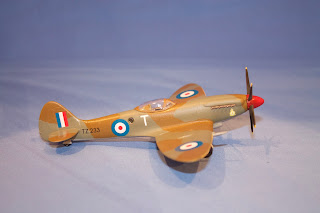
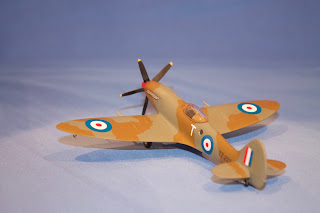
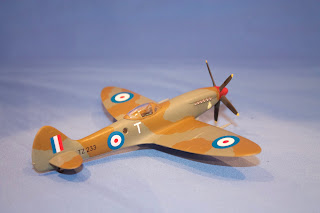
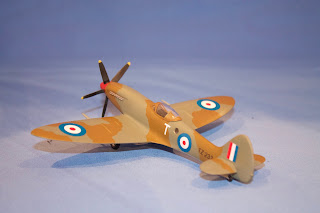
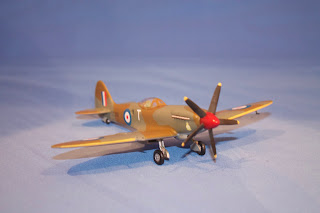
2 thoughts on “Who’s who?”
Seems to me that you turned this one into a very snazzy looking Spitfire.
mumbles to self; how does Anyone, ever understand all those Mark #s? wheew
Thanks much SR. As to Spitfire Marks, I once was curious, now I'm insane.